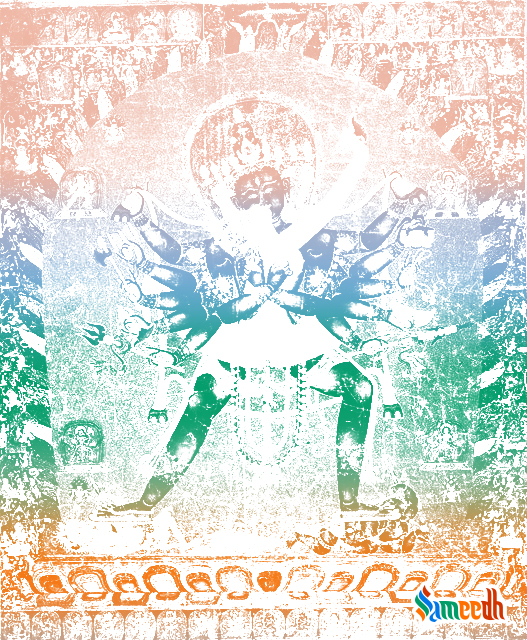This blogpost describes the concept of two different philosophies and the debate between the two.

Saṃvara with Vajravārāhī in Yab-Yum. These tantric Buddhist depictions of sexual union symbolize the non-dual union of compassion and emptiness; Image Source: The Nasli and Alice Heeramaneck Collection
DEFINITION
The Basic Differences
The concept of Duality or Dvaita is simply embedded in the belief and philosophy that our souls are separate from the Gods. It believes that the divine and the material world are separate. In the opinion of Dvaita Philosophy or Duality, the Swatantra Tattva is basically the Brahman or the universe which is synonymous to the divine or Lord Vishnu. The second concept in Duality is the existence of all the individual souls and all the matter of the universe. The concept of Duality propagates that the worlds exist with two components, the Brahman or the Universe and the individual souls.
The concept of Non-Duality or Advaita basically propagates that the whole universe is just one. It basically implies that the God and the Soul is one. There is no difference between the Brahman or the Universe and the Individual Soul. This concept is known as Advaita Vedanta in Hinduism and Monoism in Buddhism. The concept non-Duality is known to form the basis of our life and existence since it supports the arguments that everything is a part of divine and divine is a part of everything.
ORIGIN
The Debate of Ancient times
The concept of Duality and Non-Duality is a debate that has been going on and discussed since ancient times. The Non-Duality philosophy in India came up since the age of Adi Shankaracharya and the birth of Upanishads. It is known to have originated before Buddhism.
The origin of Duality or Dvaita philosophy in India can be traced back to the 14th BCE by the mind of Anandatirtha. In Europe, the concept came up in the 17th century by the work of Rene Descartes.
EXPLANATION OF THE PHILOSOPHY
The Core of the Debate
The bone of contention between the two philosophies lies in the basic belief of this philosophy. According to Non-Duality or Monoism or Advaita Vedanta, the soul and the divine are one whereas according to Duality or Dvaita, the divine and the soul are different. This difference in belief also explains the core of the two philosophies. Duality philosophy believes in the existence of the Divine separately from the soul whereas the non-Duality believes in the lack of separation in existence.
This debate also derives the concept of Salvation and whether our life exists beyond death or not.
ANCIENT USAGE
The Philosophers of the philosophies
The non-Duality philosophy was established in Hinduism by Adi Shankracharaya around 800 CE. The Duality philosophy or Dvaita philosophy was initiated by Madhava Acharya around 13th century.
Many different cultures and countries came up with different versions of these philosophies later in the history.
NATIONAL AND INTERNATIONAL USAGE
The Followers of the philosophies
The followers of these philosophies are connected to the religion that is associated with these philosophies. Hinduism and Buddhism support non-Duality in the form of Advaita Vedanta and hence, the followers of the religion follow the philosophy of non-Duality.
Life is at the core of Dualism Vs Non-Dualism
The existence of this debate supports the existence of life and divine in our universe. This debate defines the evolution of different philosophies and lifestyles. People’s belief in either of these philosophies define their outlook towards life and the divine.
To know more about different philosophies, keep reading blog posts on Sameedh.
